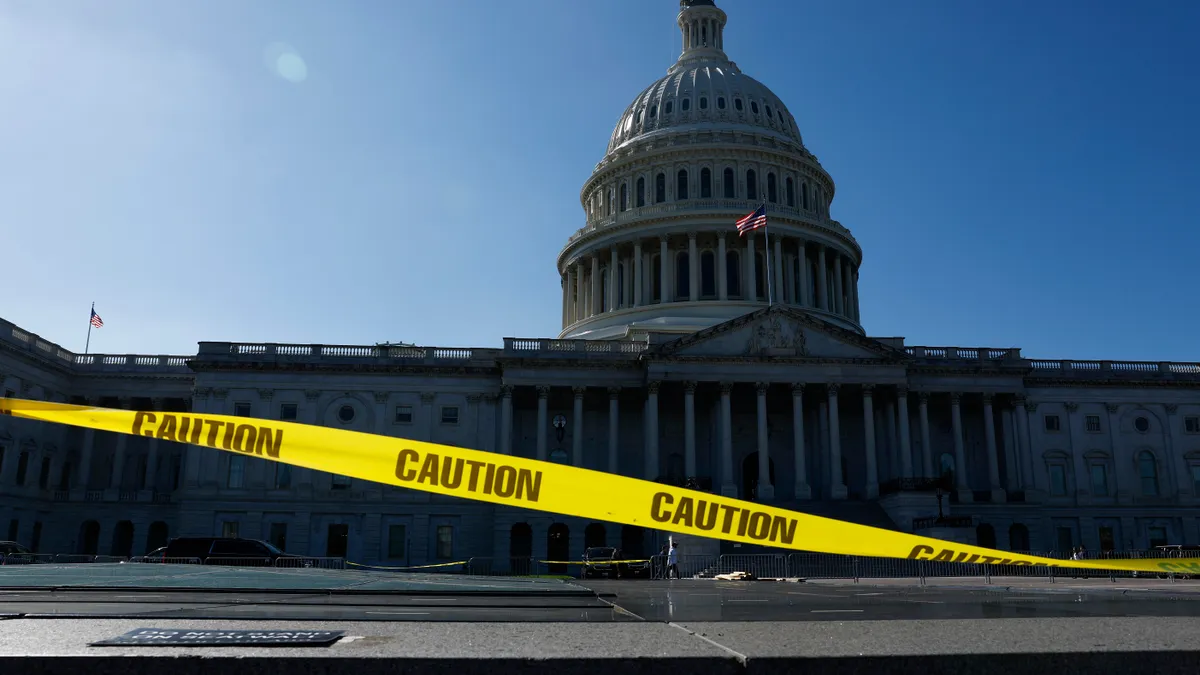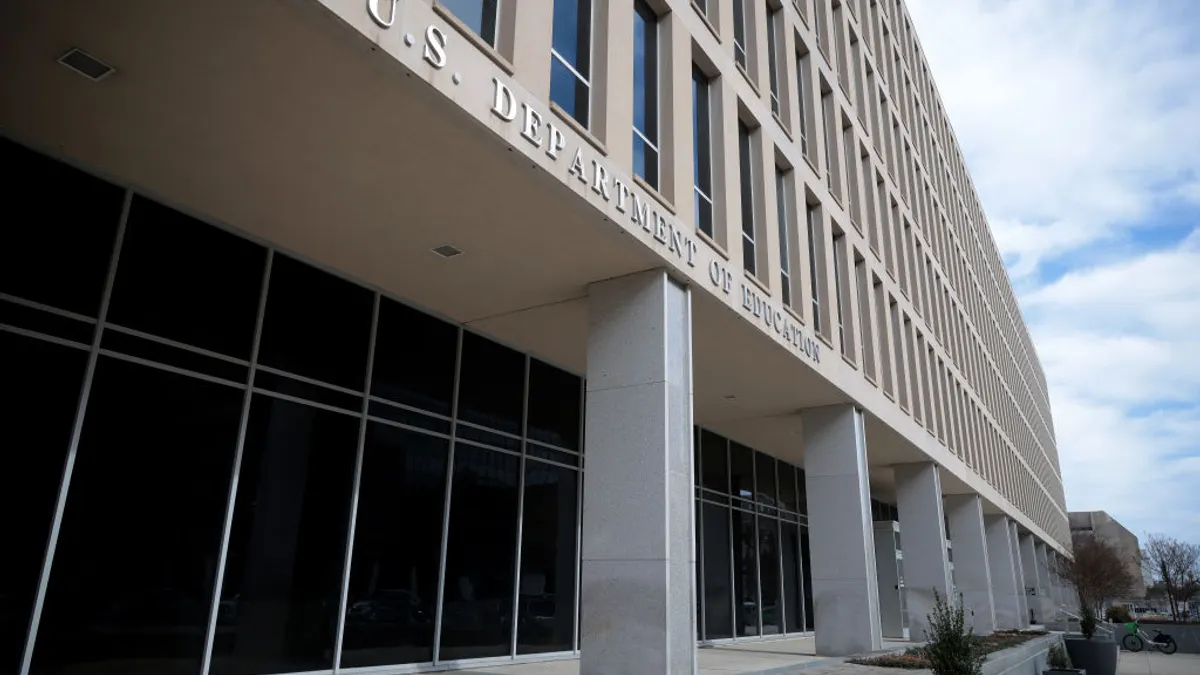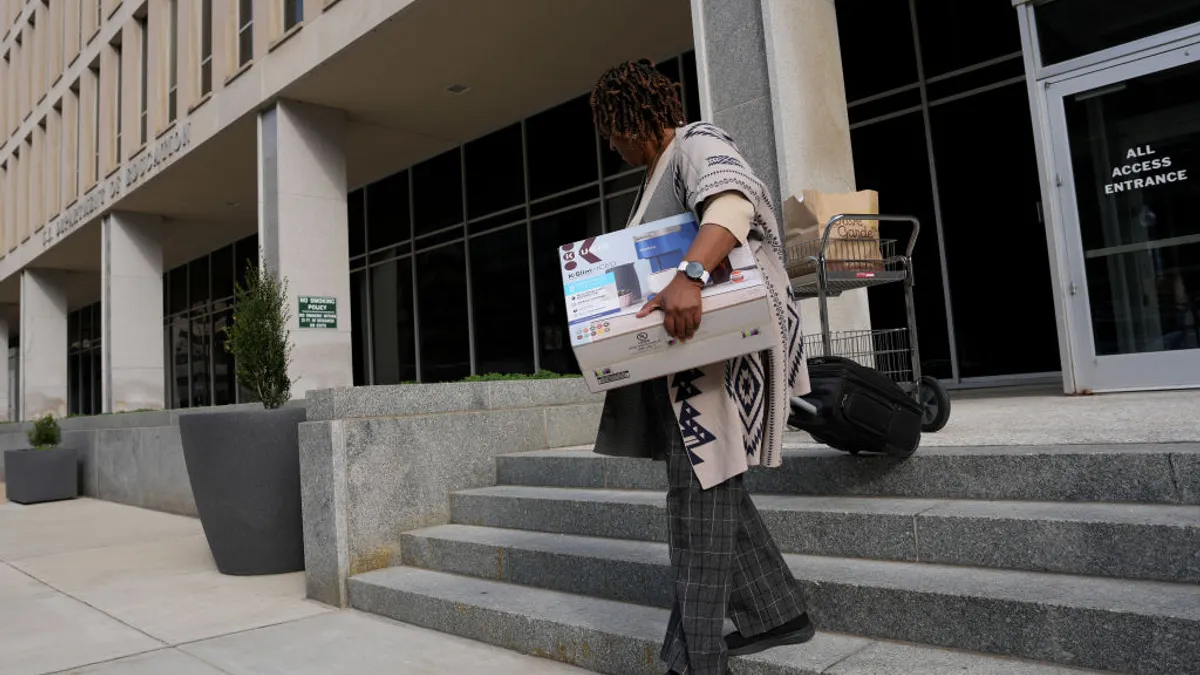Early childhood and K-12 educators are anticipating the impacts they'll see from a potential federal government shutdown if Congress doesn't approve a FY 2024 budget or short-term funding plan by the end of the day Sept. 30.
Despite Congress reaching a budget deal in June to level-fund nondefense programs, including early childhood, elementary and secondary education, lawmakers have been at an impasse on determining specific appropriations.
In the Republican-led House, lawmakers are pushing for deeper cuts to the agreed upon Fiscal Responsibility Act. The Senate, meanwhile, is proposing a bipartisan agreement for a continuing resolution to keep the government open through Nov. 17, according to a statement from Sen. Patty Murray, D-Wash., chair of the Senate Appropriations Committee.
As lawmakers debate how to proceed, early learning and K-12 stakeholders are planning for immediate and longer-term effects if a deal isn't reached.
Here are some of the main concerns:
Early learning
For the early education field, the Saturday deadline aligns with the end of COVID-19 emergency funding for child care stabilization grants. These dual fiscal events are expected to cause immediate changes.
Without a budget deal by Oct. 1, some 10,000 children and families across the nation will lose access to Head Start early learning programs for infants, toddlers and preschoolers from low-income families, according to a statement this week from the National Head Start Association, a membership advocacy organization for Early Head Start and Head Start children, families, staff and grant recipients.
A fiscal contingency plan for FY 24 by the Administration for Children and Families, which oversees Head Start, said, "Head Start and other social services programs will continue previously funded operations." ACF also said it would continue referrals and care of children under the unaccompanied children program for youngsters coming into the country.
But NHSA said that if the shutdown stretches from days to weeks or even months, the likelihood of closed classrooms "increases drastically."
"We urge Congress to come together on an agreement as quickly as possible—to ensure Head Start classrooms stay open, children learn, parents work, and the Head Start workforce is afforded the support they need in fiscal year 2024,” the NHSA statement said.
Additionally, $23.97 billion provided in the American Rescue Plan to help keep child care programs afloat during the pandemic also comes to an end on Oct. 1. As a result, The Century Foundation predicts about 3.2 million children will no longer have access to child care, and about 70,000 child care programs will close once spending for this grant money ends.
K-12
The U.S. Department of Education has yet to update a fiscal contingency plan from 2021. In that plan from two years ago, Education Secretary Miguel Cardona said the department would only "perform work that is supported by budget authority that does not require congressional action pursuant to an annual appropriations."
The outdated plan also said the department would furlough more than 90% of its total staff in the first week.
Elleka Yost, director of advocacy for the Association of School Business Officials International, said the impact of a government shutdown to K-12 depends on how long it lasts.
"Any delays in Congress completing its annual appropriations work creates uncertainty for district leaders when they need to forecast what federal funding is going to be available in the future for key programs," said Yost in an email. Yost was referring to key programs such as Title I and the Individuals with Disabilities Education Act.
The budget uncertainty comes as districts are planning to spend down the last of the federal COVID-19 emergency funding, also known as American Rescue Plan funds. The ARP obligation deadline is Sept. 30, 2024, and the spending deadline is Jan. 28, 2025.
Yost said if federal offices are closed or operating with a limited staff, state and district leaders may experience delays in getting questions answered or receiving technical assistance or guidance. For example, the Education Department recently announced it would accept requests to extend spending for ARP money. In that announcement, the department said more details about the extension would be issued this fall.
A prolonged government shutdown would also affect schools that rely on Impact Aid to help offset revenue lost due to the presence of tax-exempt federal land, including schools on tribal lands, military bases and areas with low-rent housing properties.
The Department of Defense Education Activity, which operates schools on military bases in the U.S. and internationally, announced on its website that while its schools would remain open for their 66,000 students, all sports and extracurricular activities would pause during a government shutdown.
The U.S. Department of Education’s contingency plan from 2021 said that during a lapse in funding, it would pause most of its grantmaking activities, including reviewing and awarding grant funds.
A pause in Impact Aid support "would create significant funding challenges for these districts and deepen inequities for vulnerable student populations," the National Association of School Psychologists said in a statement posted Thursday.
NASP said another worry over a longer-lasting budget impasse is free and reduced-price school meals programs. The association said that in 2018-19 — during the last and longest government shutdown, which carried on for five weeks — feeding eligible children was a key concern for school leaders.
"The longer the shutdown lasted, the more creative school leaders became to continue feeding kids, which is a top priority for many schools and districts serving students experiencing food-insecurity," NASP said.
The U.S. Department of Agriculture, which oversees school meals programs, has not updated its fiscal contingency plans since 2020.
The White House, in a Sept. 20 statement, also raised concerns about a pause in funding for the Special Supplemental Nutrition Program for Women, Infants, and Children, also known as WIC. The program provides federal grants to states for supplemental food, health care referrals and nutrition education for low-income pregnant and postpartum women, as well as to infants and children up to age 5 who are at nutritional risk.
People who rely on the program, which serves nearly half of babies born in the U.S., "would soon start being turned away at grocery store counters, with a federal contingency fund drying up after just a few days and many states left with limited WIC funds to operate the program," according to the White House statement.







 Dive Awards
Dive Awards










